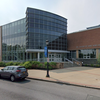Schools to offer free breakfast and lunch this year to all students
VOORHEESVILLE — As students gear up for the new school year, free breakfast and lunch are both on the menu.
That’s because of the New York State Universal School Meals program, whose central tenet is that participating schools serve both breakfast and lunch to students at no cost.
All public school districts, charter schools, and private schools that participate in the federal National School Lunch Program or School Breakfast Program are required to “serve breakfast and lunch at no cost to the student,” per the program’s enacting legislation.
Every one of those students who walks into a cafeteria will receive free breakfast and/or lunch; no one is expected to pay.
Enacted as part of this year’s state budget, families taking advantage of the $340 million program could save as much as $1,980 per year per child, according to one estimate.
The law as written doesn’t specify an end date; rather, it creates an ongoing obligation for the state to include universal meals in its budget each year moving forward. The program was designed to be revenue-neutral for school districts, with the state picking up the tab on anything not covered by federal funds.
BKW
Berne-Knox-Westerlo Superintendent Bonnie Kane said her district has had free lunch and breakfast in place since last year, her first year as superintendent, and that’s because BKW is a Community Eligibility Provision school.
CEP is a federal program that allows high-poverty schools — where 25 percent of students fall under the category — to receive federal reimbursement for all meals at the highest payback rate.
At BKW, according to the most-recent data filed with the state, about 39 percent, 266 out of 681, of students are considered economically disadvantaged so free meals are offered to all students without collecting individual household applications.
While this year won’t really be a change for BKW students, Kane said, “We still encourage our families to do the community eligible worksheet … Just to continue that data so that we can get funding from the state and federal government.”
Kane said of the program, “It’s just amazing for kids because no kid is ever hungry.”
She explained that every student is assigned a lunch number that they type in when receiving breakfast or lunch, and “every kid has a number regardless of whether they are purchasing lunch or not. And so everyone does the exact same thing. So it completely removes the stigma.”
Kane, who attended Cobleskill schools, said she “was that student who received free and reduced lunch growing up as well, and I remember that stigma as well. So these types of programs really do a great job of removing that. And just making sure that every student is fed.”
Suburban schools
Voorheesville Superintendent Frank Macri said that, when Voorheesville offered free and reduced-priced lunch “during COVID,” there was an increase in the number of students who received breakfast and lunch.
“And that was: It doesn’t matter if it’s socioeconomic levels or any of those issues. We just saw across the board, an increased number of students taking advantage of that. I do believe with this as well, we will see that,” he said.
Guilderland Superintendent Daniel Mayberry similarly anticipates an increase in participation, but said, “Until it starts, we’re not really sure exactly what the impact will be on our student population.”
With the expected increase in participation, Guilderland anticipates “adding some staff and/or adding some hours to our cafeteria program to meet the need,” Mayberry said.
Asked if the cost of the extra hours or employees would be covered by state or federal funds, Mayberry said “The more meals you serve, the more people you need in order to prepare and serve those meals. So it will likely be accounted for in the meal reimbursement.”
In Guilderland, 1,222 out of 4,840 students, or 25.25 percent, fall into the economically disadvantaged category. That percentage has grown in the last two years.
“We’re in the high teens or low 20s,” Assistant Superintendent for Business Andrew Van Alstyne told The Enterprise in December 2023 of Guilderland district-wide percentages of needy students, including all seven schools: five elementary schools, Farnsworth Middle School, and Guilderland High School.
The schools with the lowest percentage were Pine Bush and Lynnwood elementary schools, at 13 to 14 percent, he said. Altamont Elementary School had the highest level.
“We have seen significant growth in need in our student population,” said Van Alstyne in 2023, adding, “Not just economic need.”
At Voorheesville, 167 out of 1,197 students, or 13.95 percent, fall under the economically disadvantaged category.
Asked if Macri attributed the pandemic increase to anything in particular, like reduced stigma from receiving free or reduced lunch, he wouldn’t speculate. “It’d be anecdotal and anything I pull out may or not be true; I haven’t done a deep dive into the data,” he said.
He did say, when he was in school, at Mount Markham in Herkimer County, he was on the free and reduced-price lunch program. “And back a very long time ago, there was a stigma,” Macri, who’s in his 40s, said. “I think the stigma is gone because schools have done a lot of work to get rid of that, with the codes and everything else. No one ever even knows.”
“So I don't think that's really there anymore,” Macri said of there being a stigma. “Maybe in the student’s own perception. But back in the day, it was much different because we had … yellow punch cards.”



